In Córdoba, where I came in the morning, I first saw cute horses in the area called Caballerizas, and then I experienced the splendid air of the Alkazar Fortress. Click here to read what I wrote about this episode!
Now I go on a trip with the Mezquita-Cathedral, the most important treasure of the city.
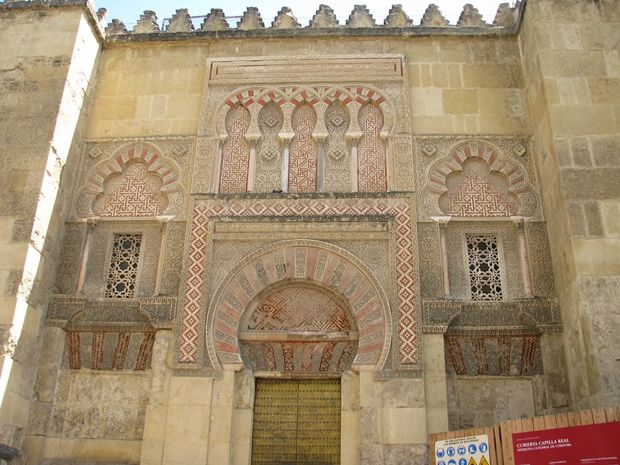
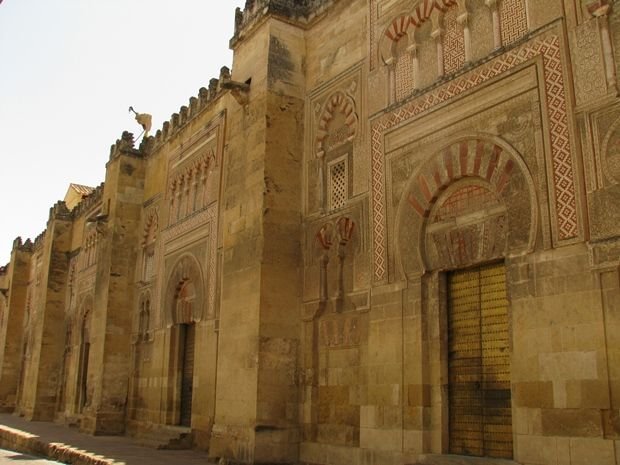
After reaching the entrance of Mezquita and getting the brochure for 8 €, I get rid of the extreme heat and relax a little. The temperature inside is nice.
Mezquita, the mosque, was the first Muslim to conquer this area and began to be built in the 8th century. Different sultans added new sections to the mosque and became a huge work. In 1236, the area was converted into a cathedral by the passing of the Christians again, and this time the sections about Christianity were added. Today, with its parts reflecting both periods, it is a tremendous and magnificent structure, a treasure of Córdoba, and the country has a very important place for tourism as well. The sections of the mosque period are made up of frequent columns. It's probably a stone pillar forest; simple but very impressive ...
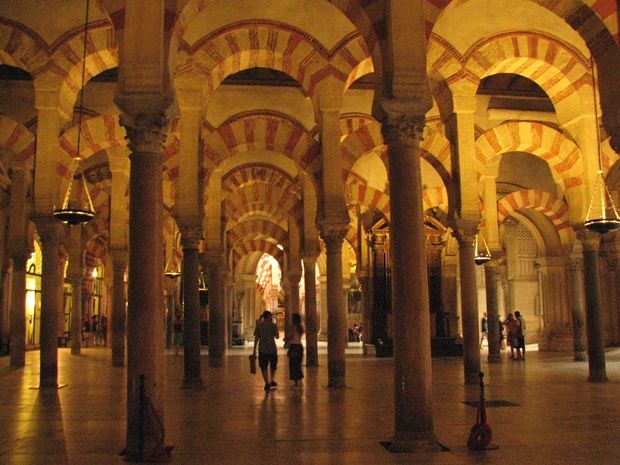

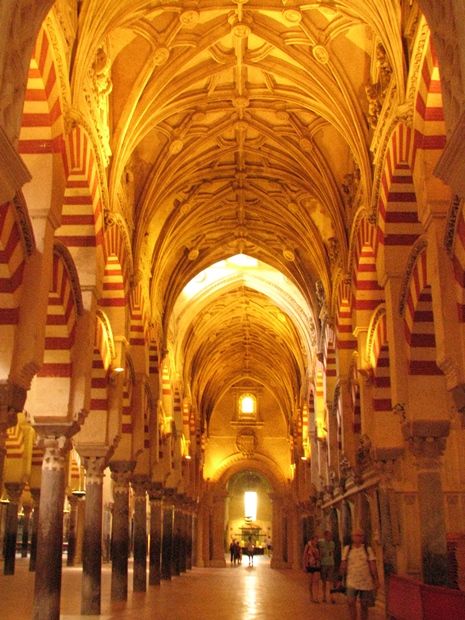
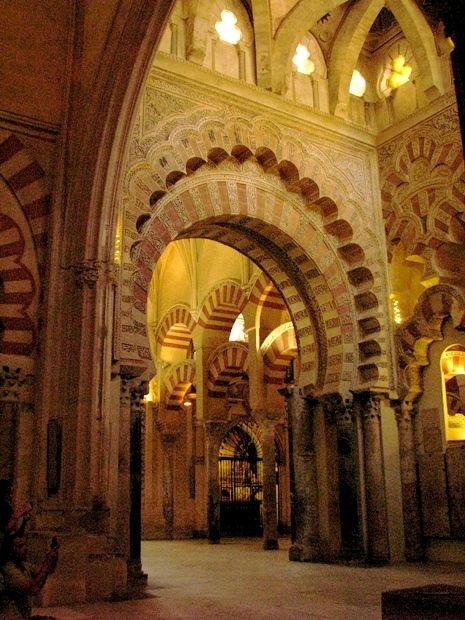
It is useful to follow the step-by-step brochures given at the door when you are inside; because the inside is really big and very beautiful. The structures made during the Christian era are also very impressive; but I do not know if it's complicated, if it's fancy, if it's more fancy. There are so many detailed ornaments that I am surprised at what I will look at. At that time, if there were a lot of wall, wood, stone decoration methods in the conditions of the time, they seemed to have made all of them in such a way that there is no space in the same place.
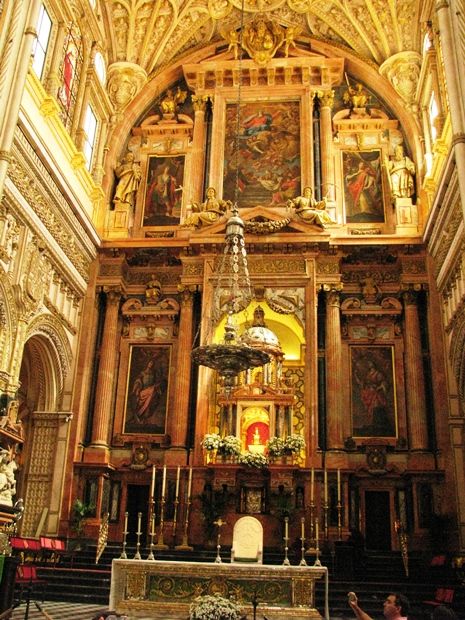
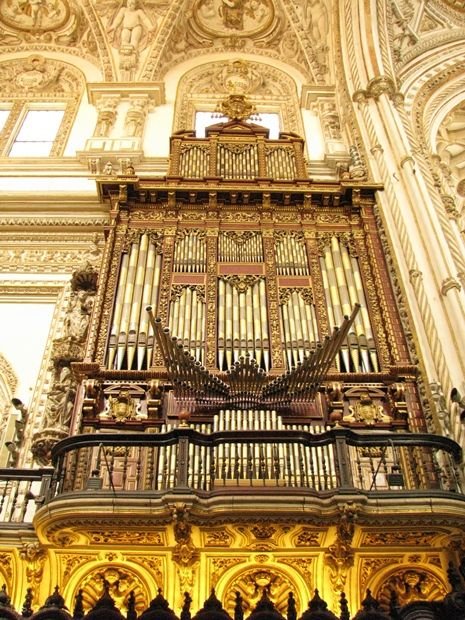
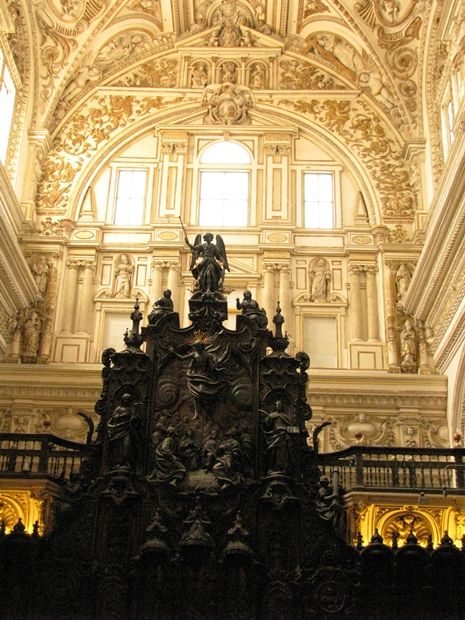
The periods of Islam and Christianity are not separated in a sharp way, but seemed to be intertwined. For example, a giant fresco, etc. there is always a small chapel on the edge of the interior.
The Camino's Altar section still stands and is one of the most interesting and important parts of the building.
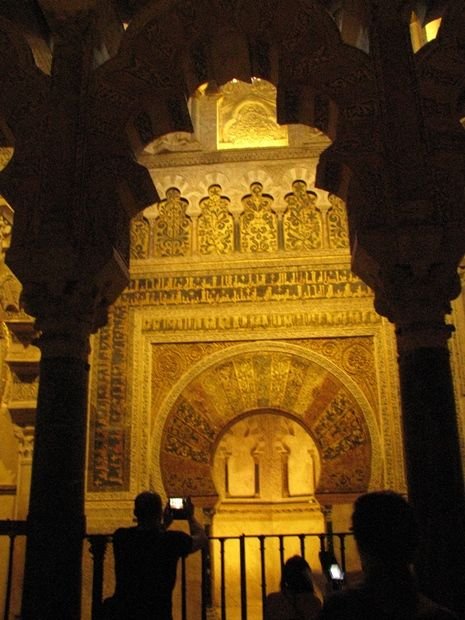
When used as a mosque, III. The 40-meter minaret built by Abd al-Rahman in the Christian period III. Hernán Ruiz added gigantic bells that can be seen from the outside. Now you can go up to the top of the minaret with the bell tower (every 30 minutes); but at noon, it was open again in the afternoon.
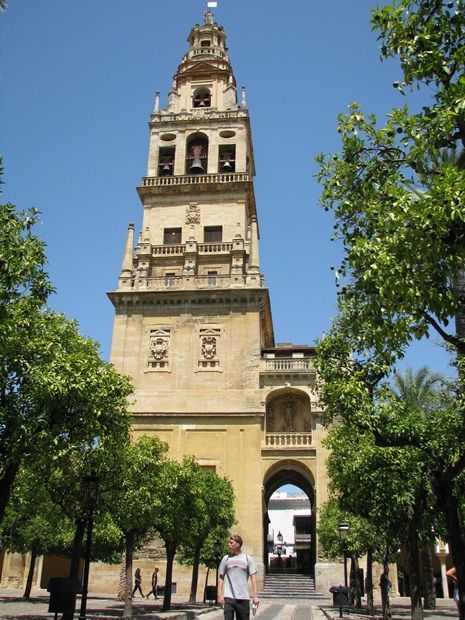
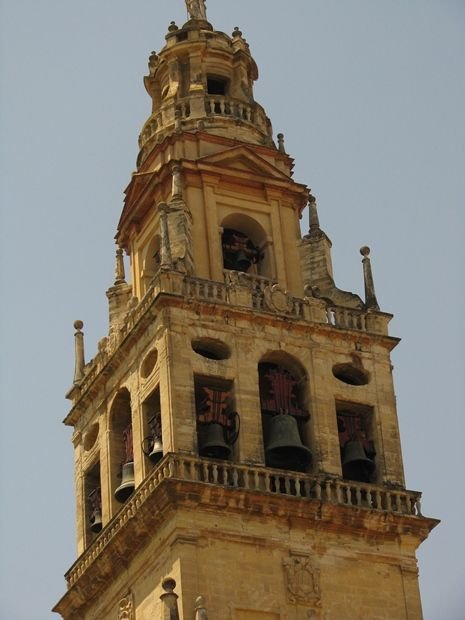
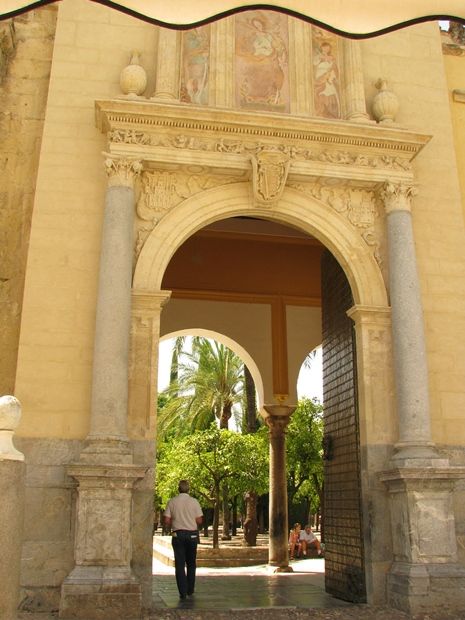
It is 16.00, I walk for hours without stopping, now I have to eat something. I go into a local restaurant (Navali Bar), it's difficult or if we understand English, ice cream comes first followed by tuna salad and fried fish. Actually I did not say it with paella; We always eaten in Málaga and it was seafood; but this restaurant came with huge huge flesh and smell did not go well, pork chops, when I said I could not eat, they brought me a tuna salad. I have also reviewed the map and brochures that I have taken while eating at a small, local restaurant, and after a little rest I am ready to go for a walk again.
When I arrive in the morning, I go back to Puerta Sevilla, the first entry point of the city, and drink a cup of coffee and a large bottle of cold water in the beautiful restaurant in front and take advantage of a little wi-fi.
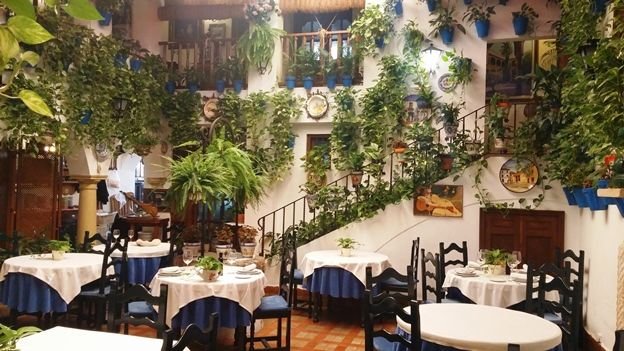
Then I go to the Jewish Quarter and look at places I have not seen. Although the name is still the Jewish Quarter, the whole Jewish population in this region was actually exiled by Christian rulers after 1492. After the ages, the hospital was used for different purposes such as school, and a synagogue, which was restored in 1884 and opened as a monument, is located in this neighborhood.
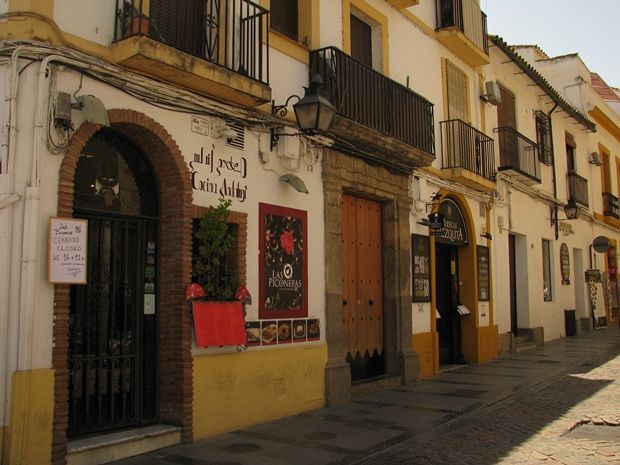
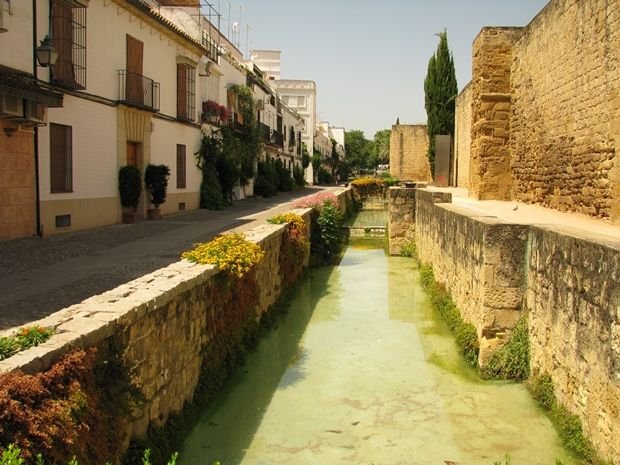
The Jewish neighborhood with the Spanish name 'Juderia' is really touristy. Restaurants, souvenir shops, stores where local products are sold ... There are many places to see around; beautiful houses, narrow streets are completely lost and tasted.
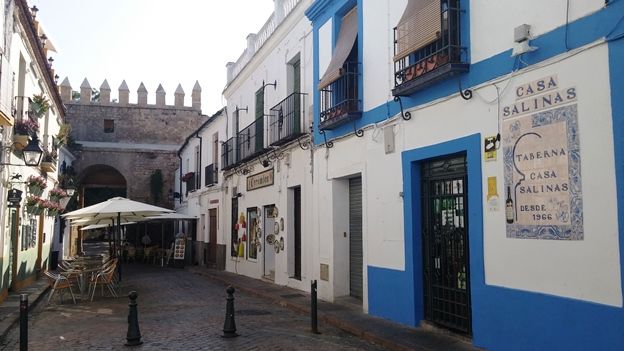
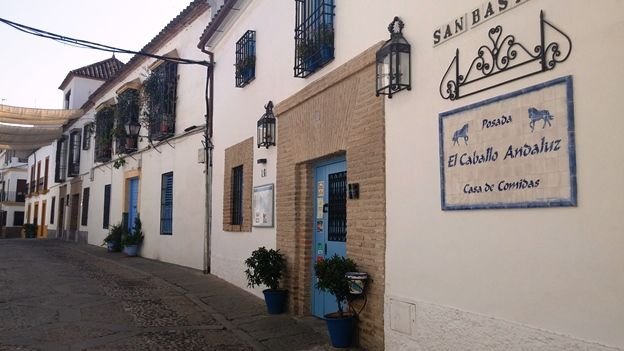
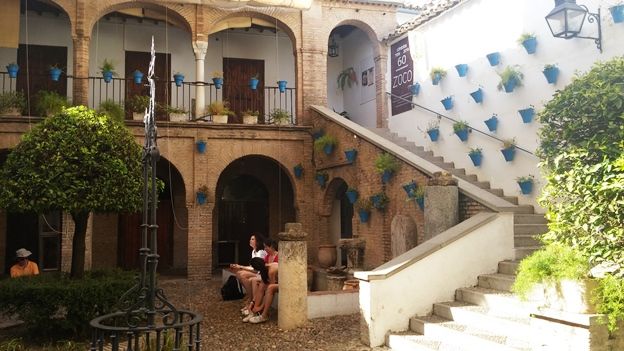
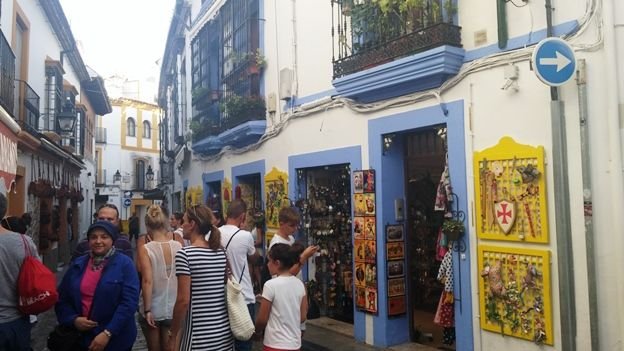
Despite the high temperature of this city, it is necessary to see it on foot. I'm throwing the map and walking around the streets. There is another beauty everywhere. The area known as "el patio" is famous. There are courtyards in the middle of the high-walled houses seen from the outside and a small ornamental pool in the middle. As the weather is very hot in the summers, they block the sun between the high walls and have a little coolness thanks to the halls where these ornamental pools are located. Some of these hunts can be visited by pay, many of them in the homes of local people. From www.puertadelospatios.com or from your mobile application, you can explore what is navigable from the hand patio by following it on the map (if you were the one who told me this before you left, you know what it is :-))
While I was walking in the streets, I saw a place called "Casa Andalusi" next to the Synagogue; this Andalusian house seemed worth a visit, I gave 4 € entrance fee and started to walk around and step by step to photograph. The house, which reflects the magnificent days of this region in the 12th century, is of course entered with a "patio".
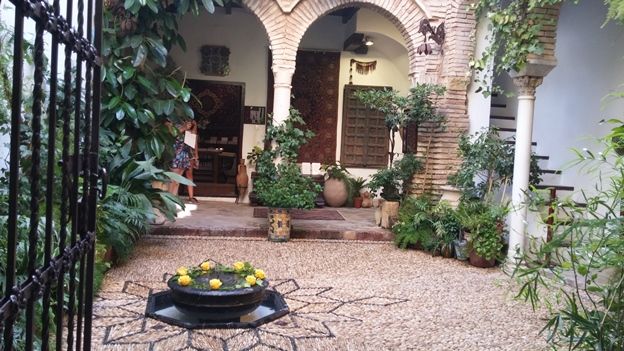
I am stepping into a house full of coolness and peace from the outside heat. Very impressive rooms in every step, a house full of goods. He walked around in the house and worked in a raucous voice and added a different air to the house.
In the lobby there was a model of paper making; Cordoba was one of the first cities made in Europe in the 10th century. Manuscripts on the walls, the Qur'an, etc. valuable goods were exhibited. I love this beautiful museum house where I try to see all the details.
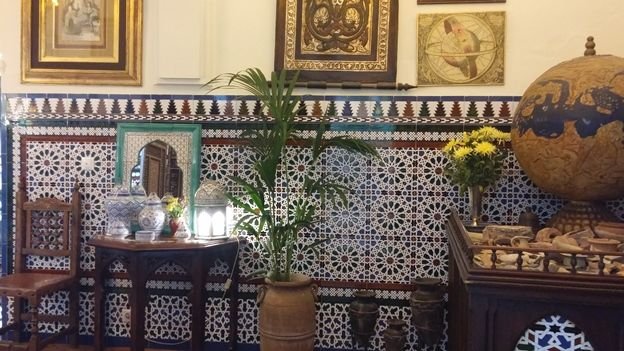
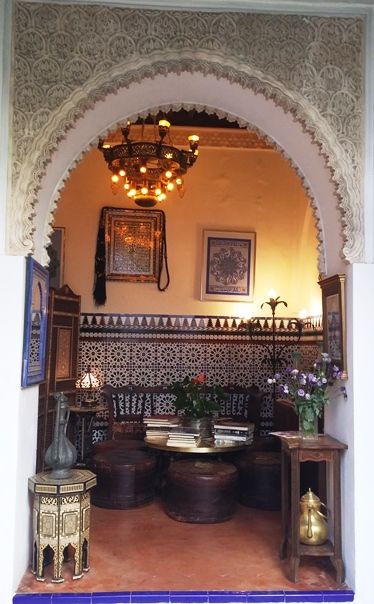
After Casa Andalusi we wander the streets again for days we want to go; but I entered one of the old-fashioned tea houses where we had no chance. These tea houses are called "tetería". In Spanish it means the place where the lamb on the ea is sold, the ezgi speaks well. Cafeteria = coffee place, coffee shop; Heladería = Ice cream shop, ice cream shop; Zapatería = Like a shoemaker.
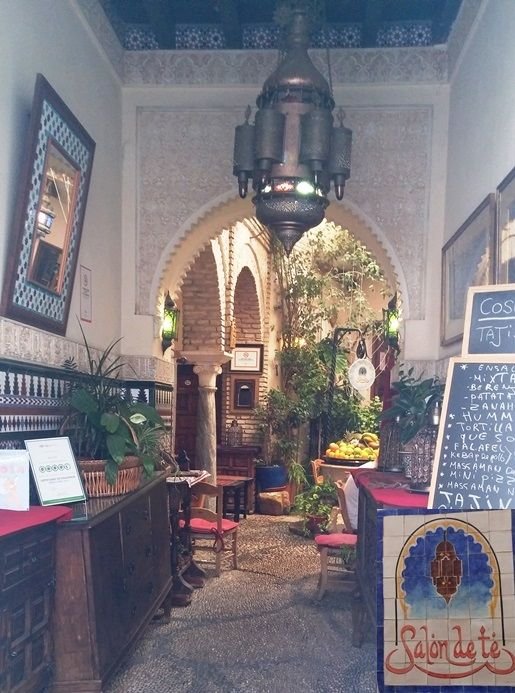
I guess Salon de Te is one of the places frequented by tourists with different decorations. People from different nationalities looked at the menu and liked tea from teas - including me. I have a pain in my throat since morning when I stayed in the over-conditioned environments in the evenings; lemon, green tea, black tea and a bit of an aromatic tea. Medium size.
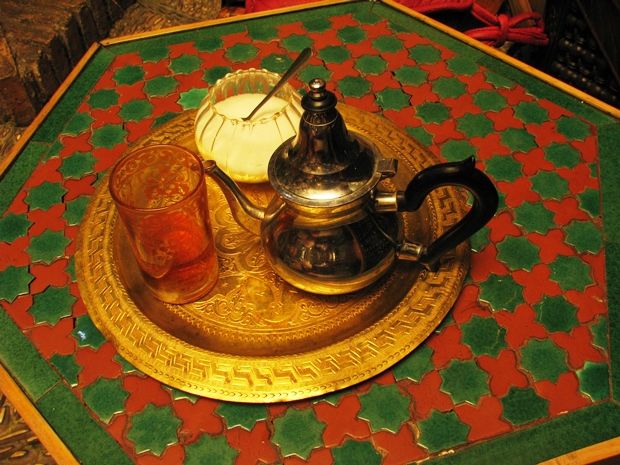
After sipping the tea and looking around for a while, I go around in the caravan. I do not know how long this plunge lasted, but when I realized that it was 35 minutes before the train stayed, I ran away from my runner and quickly crossed the streets I was familiar with and reached the train station. I will go to Málaga to sleep for an hour and meet my friends.
You will be a sweet and unforgettable memorial to the Alkazar and the mosque-cathedral that gives you peaceful warmth, lost alleyways, peaceful sound of syrupy water, goodbye Kurtuba or Córdoba ...
Cordoba looks like an incredible town. I regret we had to skip it on our Andalucia trip a while back... :(
Downvoting a post can decrease pending rewards and make it less visible. Common reasons:
Submit